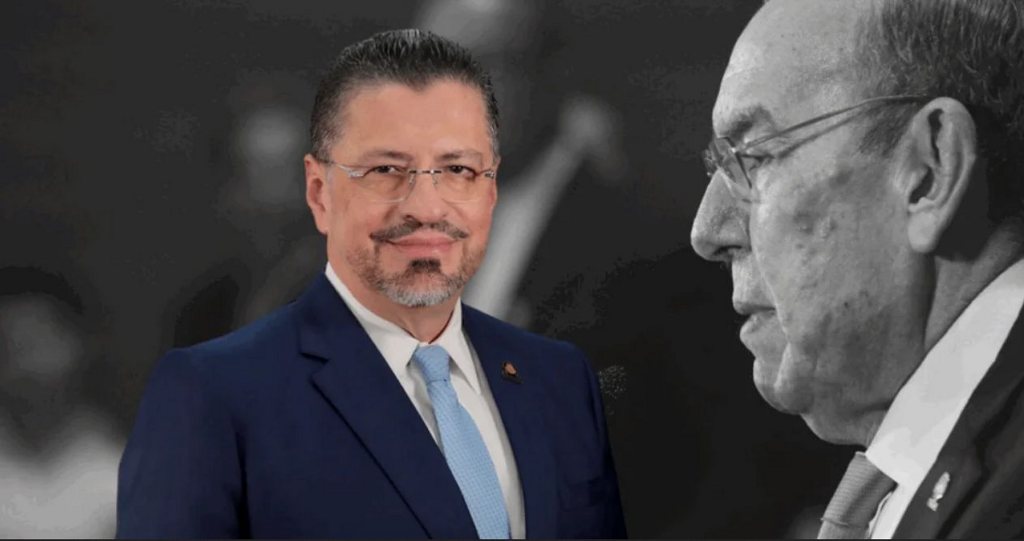Q24N (Confidencial) Nicaragua is the only country in the world where ministries, state institutions, or collegial bodies are led by two officials.
These “co-leaderships” have become the norm within the Nicaraguan Executive Branch — a mechanism that, according to exiled political analysts, the “co-president” Rosario Murillo has put in place to sideline the “loyalists” of her husband and “co-president” Daniel Ortega, and to secure an “orderly” and “safe” dynastic succession.
The appointment of two “co-directors” or “co-presidents” in state institutions began in 2016, when the presidential couple named Guillermo González and Xóchitl Cortez as “co-directors” of the National System for Disaster Prevention, Mitigation, and Response (Sinapred). From there, the practice of appointing “co-leaders” expanded to other institutions, under the guise of a supposed gender equality policy.
“Co-leaderships” imposed in 13 institutions
Between 2016 and 2025, the regime has imposed “co-leaderships” in 13 state institutions — though not all positions were divided between men and women. An example is the Nicaraguan Tourism Institute (Intur), where Anasha Campbell, wife of Foreign Minister Valdrack Jaentschke, and Mara Vanessa Stotti, wife of Daniel Edmundo Ortega Murillo and daughter-in-law of the dictatorial couple, were both appointed.
Other institutions where joint male-female leadership has been established include:
- The Institute of Cultures of Peoples and Youth
- The Nicaraguan Sports Institute (IND)
- The Dredging Company of the San Juan River
- The National Cinematheque
- The Office of the Comptroller General of the Republic, which, despite being a collegial body, now has two co-presidents: Luis Alberto Rodríguez Jiménez and María Eliette Esquivel Tinoco.
The most recent institutions to adopt shared leadership were the Ministry of Foreign Affairs, headed by Valdrack Jaentschke and Denis Moncada, and the National Police, directed by General Commissioner Francisco Díaz —whose daughter is married to one of the presidential couple’s sons— alongside General Commissioner Victoriano Ruiz.
Meanwhile, at the Institute for Urban and Rural Housing (INVUR), the Nicaraguan Institute for Territorial Studies (INETER), and the National Forestry Institute (Inafor) — the latter transferred to the Ministry of Environment and Natural Resources (Marena) in October 2024 — legal reforms were introduced to institutionalize “shared leadership,” but the appointment of two co-directors never materialized.
To institutionalize these “co-leaderships,” the Ortega regime reformed laws such as those governing Tourism and the National Police, creating what Nicaraguan political scientist and former political prisoner Félix Maradiaga calls a “façade of legality.” Maradiaga stressed that “these legal formalities are used to strip democratic guarantees of their real meaning.”
He added that the purpose of the “co-leaderships” is to “shield the dynastic succession by elevating Rosario Murillo to formal parity with Daniel Ortega.”
In February 2025, through a reform that modified 93% of the articles in the Political Constitution, the regime established the figure of the “co-presidency” of the Republic — and Rosario Murillo automatically proclaimed herself “co-president,” despite never having been elected to that position by any Nicaraguan.
Sidelining officials loyal to Ortega
According to Nicaraguan political scientist José Antonio Peraza, this process of Rosario Murillo’s dynastic succession is being carried out in a “crude” way, creating “chaos in public administration” through the appointment of two people to the same position.
“Since Daniel Ortega hasn’t died yet, she [Murillo, Ortega’s wife] is gradually replacing or matching his power in each state institution where she believes she needs leverage. So what’s essentially happening is the displacement of people loyal to Daniel by people loyal to Rosario,” Peraza emphasized.
In this succession process, Peraza notes, “what’s interesting is how she [Murillo] has long been replacing the old Sandinista guard and anyone with any loyalty to Ortega, so that when the time comes for Ortega’s passing, the transition will be as orderly and secure as possible for her.”
Through this displacement of officials loyal to Ortega, Murillo has created “a process of dogged loyalty,” Peraza stresses.
Lawyer and former liberal deputy Eliseo Núñez observes that this model of “co-leaderships,” designed by Murillo, “aims for cross-control of institutions.” By placing two people in the same position, “one monitors the other, and this way she has two channels of information to verify whether someone is lying to her.”
Maradiaga offers a similar assessment, describing the “co-leaderships” as a form of “cross-surveillance,” since “two leaders neutralize each other and report upwards; no one accumulates power independently.”
On the other hand, Núñez points out that appointing two “co-presidents” or “co-directors” in public institutions also increases the administrative costs for the state. With two officials in leadership positions, associated expenses tend to rise.
“What Rosario [Murillo] has done is completely outrageous,” he warns.
In the same vein, Maradiaga emphasizes that organizational theory shows duplicating leadership positions raises coordination costs and dilutes responsibility. “In practice in Nicaragua, the ‘double signature’ does not strengthen oversight; it destroys it, because real decisions are not made within the institution but at El Carmen,” he stresses.
Furthermore, Núñez cautions that shared leadership positions “increase opportunities for political clientelism.”
Maradiaga adds that the duplication of command is also a form of “loyalty payments,” which can include “family members,” as seen in the case of Intur.
Murillo is the one who wields power in the institutions
All three analysts agree that when there are two heads in a public institution, it is “difficult” to know who actually makes decisions. However, they point out that officials loyal to the “co-president” have greater institutional control and are the ones who will remain once the dynastic succession process is complete.
Núñez notes that this model of government “is not guided by public policy logic or standard governmental logic, but by what Rosario believes works for her.”
The real power in the institutions, Maradiaga warns, is exercised by “the presidential couple,” who points out that “shared leadership positions don’t distribute power; they multiply dependence… the strategic direction is set by the Ortega-Murillo duo and their family circle.”
Along the same lines, Peraza emphasizes that appointing two co-heads in an institution creates “a lot of internal tension.” In these cases, there is no manual to indicate how to proceed. “It’s improvised, designed to push people out, to exile whoever needs to be removed from the institutions. And who ends up exiled? Daniel Ortega’s people, who are losing control over power.”
In this way, Peraza warns, “those being appointed as the second-in-command are there because they obey Rosario, not because they obey Daniel. So, in the end, those are the ones who will really rule. The others remain only while Daniel Ortega is around to intervene.”
Source link
Q24N



